Translate this page into:
The groove sign in osteomalacia
*For correspondence: raradhikaag@gmail.com
-
Received: ,
This is an open access journal, and articles are distributed under the terms of the Creative Commons Attribution-NonCommercial-ShareAlike 4.0 License, which allows others to remix, tweak, and build upon the work non-commercially, as long as appropriate credit is given and the new creations are licensed under the identical terms.
This article was originally published by Wolters Kluwer - Medknow and was migrated to Scientific Scholar after the change of Publisher.
An interesting clinical sign of severe vitamin D deficiency was observed in a 30 yr old female† with gynaecological complaints at the outpatient clinic in the department of Obstetrics and Gynaecology, University College of Medical Sciences and Guru Teg Bahadur Hospital, Delhi, India, in 2015. Physical examination revealed short stature, anaemia and a transverse groove in the lower back at the lumbosacral junction - the groove sign (Fig. 1). Digital X-ray showed generalized rarefaction of the bones, multiple fractures of the ribs, iliac bones and metacarpals, loss of lordosis at the lumbosacral region, old healed fractures at the femoral neck and pubic rami (Figs 2 and 3). Serum parathyroid hormone was high (370 pg/ml) with very low vitamin D (2.1 ng/ml). She received oral cholecalciferol 10,000 U weekly for 10 wk with oral tablet calcium 1 g daily. Vitamin D levels normalized in three months. The gynaecological complaints were also addressed simultaneously. On follow up, at one year, fractures had healed with the improvement of bone density (Figs 4 and 5). The groove sign remained visible.
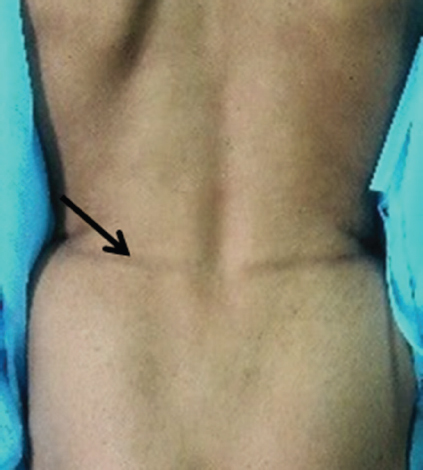
- A groove sign (arrow).
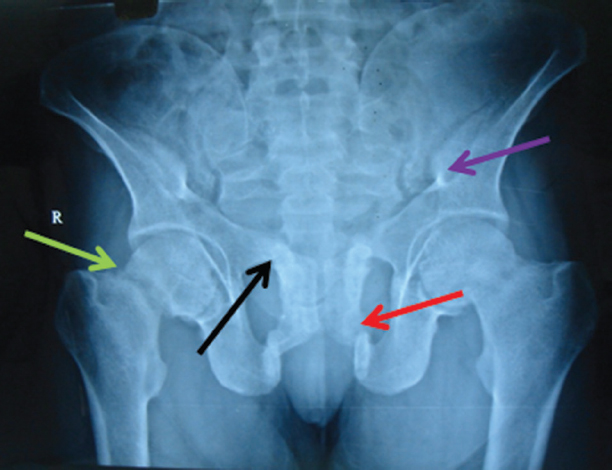
- Fracture of the bilateral iliac bone (purple arrow) and old healed fractures of neck of the femur (green arrow), superior (black arrow) and inferior (orange arrow) pubic rami.
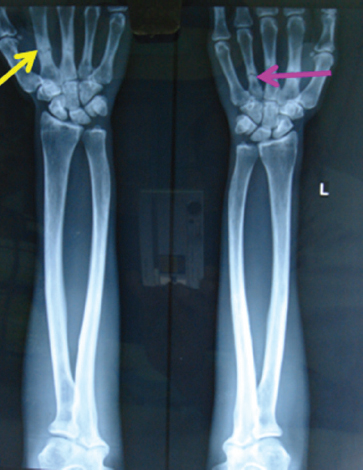
- Fractures at the metacarpals on both the hands.
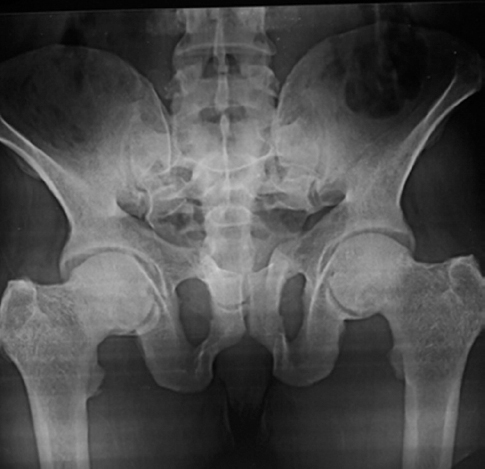
- One-year after treatment: Improvement in bone density and healed fractures in pelvis.
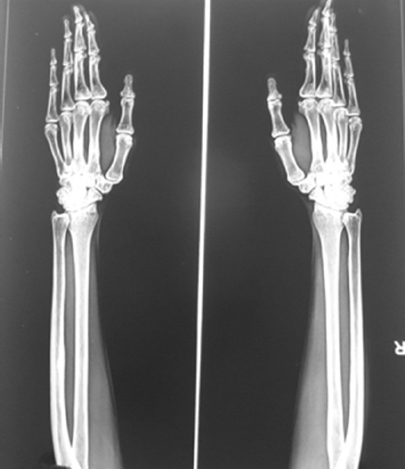
- One-year after treatment: Improvement in bone density and healed fractures in both hands.
Various physical and radiological signs for vitamin D deficiency have been described in the literature. Groove sign that is an easily observable on physical examination would be valuable for screening for severe hypovitaminosis D in busy clinics and community as an initial step to be followed by confirmatory tests. Appropriate management of this easily treatable condition would help prevent further morbidity and improve quality of life.
Conflicts of Interest: None.





